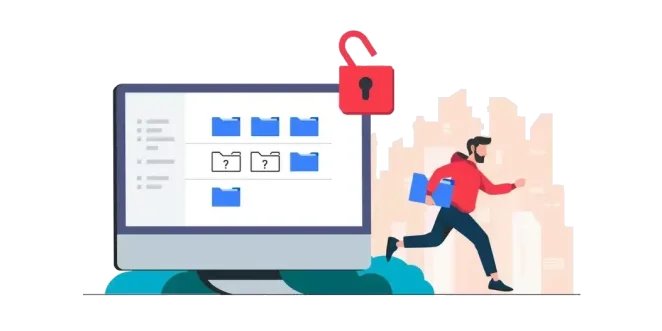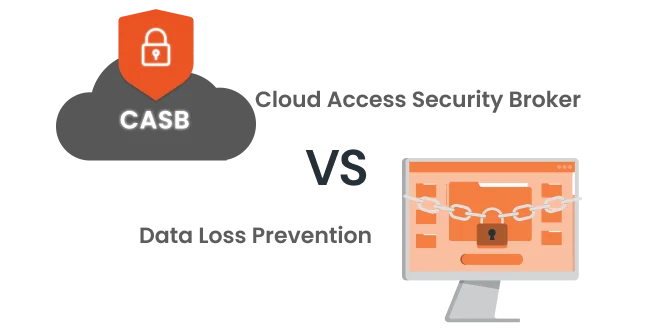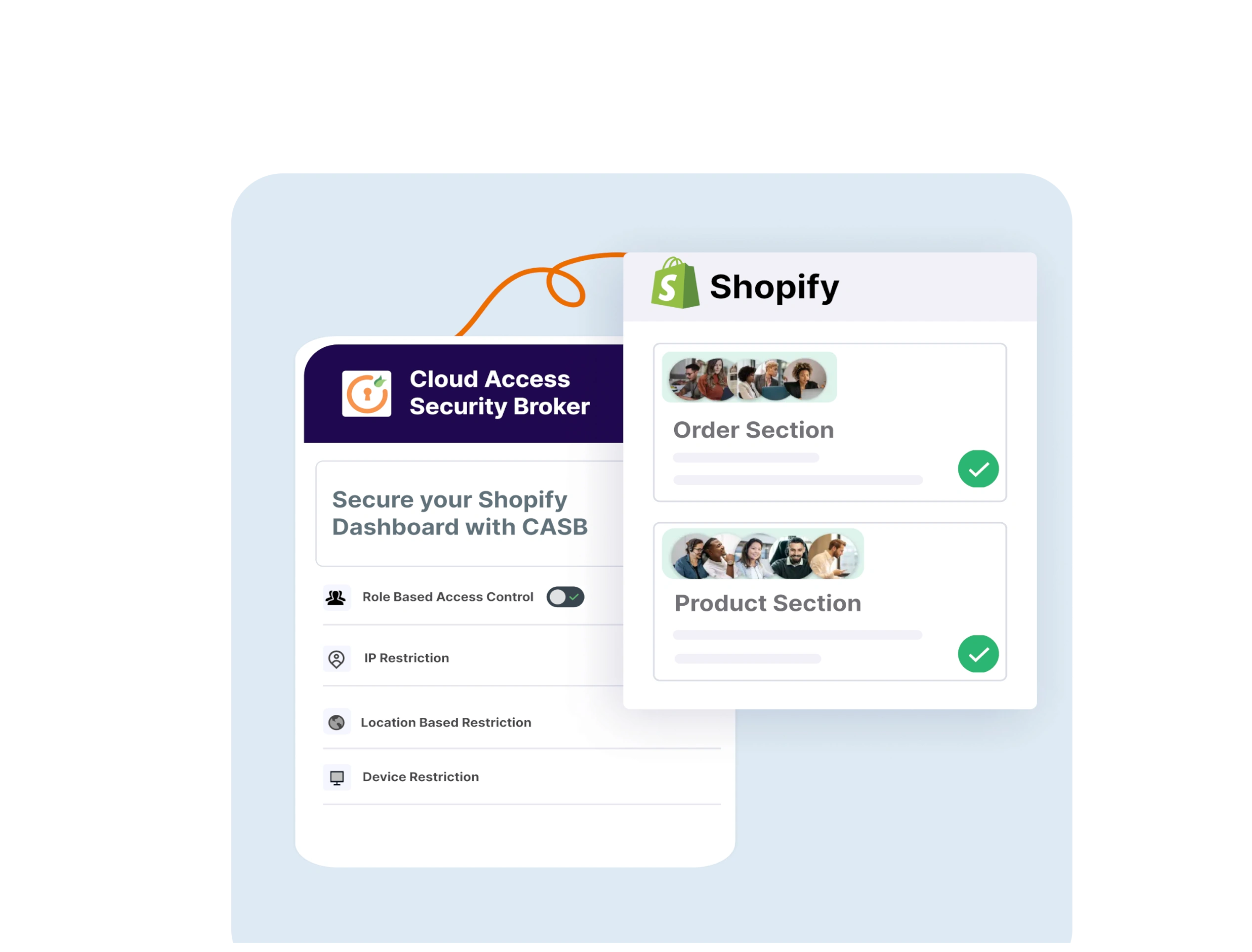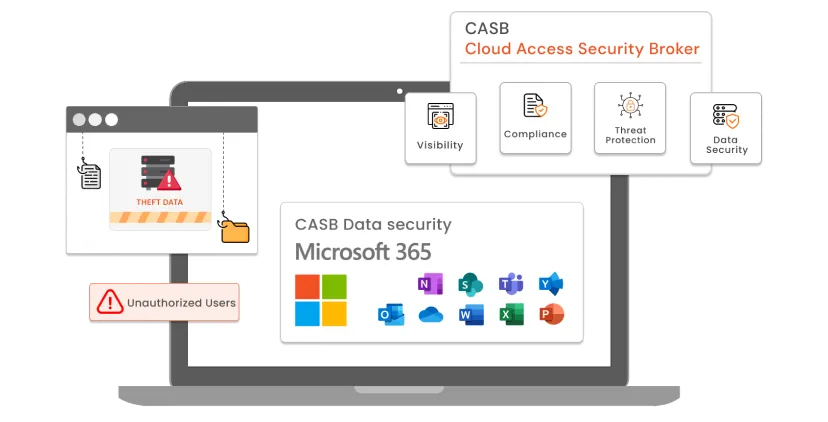What is CASB Security?
A CASB, or Cloud Access Security Broker, is a security tool that helps businesses secure their data stored on cloud apps from data breaches, malware, and unauthorized user access to the data. It is an essential security tool for any organization as it operates on 4 pillars i.e., data protection, deep user visibility, advanced threat mitigation, and helping them stay compliant with industry security standards.
What is a DLP?
DLP, or Data Loss Prevention, is a solution that encrypts your sensitive data and controls the transfer of this data outside the company network. It actively checks for security flaws and loopholes in your cloud apps. DLP protects you against malicious emails that ask for your personal information, send unknown email attachments and use risky links. It scans for sensitive data stored in unmanaged folders, all to secure employee identity and company data from foreign threats.

CASB vs DLP
Let’s compare and understand the difference between DLP and CASB solutions in detail.
Protection Scope
- CASB: Primarily focuses on cloud applications and services, providing security controls tailored for cloud environments.
- DLP: Focuses on data protection across the entire IT infrastructure, including endpoints, networks, and storage systems.
Focus
- CASB: They provide visibility into cloud application usage and help control data transfer, ensuring that cloud usage complies with the organization's security policies.
- DLP: The main goal of DLP is to prevent sensitive data from being lost, misused, or accessed by unauthorized users.
Functions
- CASB: Enforces access policies based on user, device, and location. Ensures that cloud usage complies with regulations and internal policies.
- DLP: Identifies and classifies sensitive data based on content and context. Applies policies to prevent unauthorized data transmission or exposure.
Outcome
- CASB: Enhances overall cloud security posture, providing comprehensive control over cloud applications and data.
- DLP: Specifically aims to prevent data breaches and ensure compliance by protecting sensitive data from unauthorized access and transfer.
Let’s take a look at the difference between CASB and DLP:
| Factors | CASB (Cloud Access Security Broker) | DLP (Data Loss Prevention) |
|---|---|---|
| Primary Function | Monitors and controls cloud applications | Monitors, detects, and blocks data leakage |
| Visibility | Provides visibility into cloud usage | Provides visibility into data handling |
| Compliance | Helps ensure compliance with cloud usage | Ensures compliance with data protection laws |
| Threat Protection | Protects against cloud-specific threats | Protects against data breaches and leaks |
| User Activity Monitoring | Monitors user activities in the cloud | Monitors activities related to data |
| Policy Enforcement | Enforces security policies for cloud apps | Enforces data protection policies |
Why do I need a CASB and DLP solution?
Tons of information gets passed between teams every day within an organization. For example, suppose a company is using Google Workspace apps, storing their confidential documents on Google Docs, sending mail attachments over Gmail, scheduling company and partner meetings over Google Meet, and more. All these points of data exchange need to be secured from unauthorized user access or third-party app access.
To efficiently manage all user groups, the SOC team needs to set up Google Workspace CASB to add granular access permissions, prevent unauthorized downloads, manage app usage, and stay security compliant. This helps the SOC teams detect threat vectors.
How can CASB and DLP enhance cloud data security?
Together, CASB and DLP tools form a robust defense system, ensuring that data in the cloud is accessed securely and preventing leaks of sensitive information. A combination of both CASB and DLP can keep your business secure from data breach threats, stay compliant with industry best practices, and defend against malware and ransomware threats. They provide deep visibility into user actions to detect irregular behavior that could be a security threat. This dual-layered approach of CASB and DLP is critical in today’s digital landscape, where the shift to cloud services is accompanied by increased risks of data breaches and cyber threats.
In Summary
In this blog, we explored CASB vs DLP and how CASB and DLP can work together to secure all your cloud applications and data. This combination ensures airtight data security, compliance, malware detection, threat protection, user behavior monitoring, and deep visibility, allowing SOC teams to identify potential vulnerabilities and threats.
If you're in the market for a cloud data security solution featuring both CASB and DLP, miniOrange offers the top solution to help you stay ahead of growing data threats while boosting team productivity—all at the most cost-effective pricing.
So what are you waiting for? Shoot us a query at info@xecurify.com and we will get right back to you.





Leave a Comment